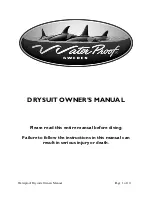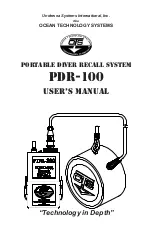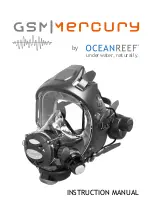
37
Known Subtraction
In the Known Subtraction method, a sample is measured with an ISE before and after the addition of a known
volume of a reactant standard. The reactant standard reacts with the measured Ion in the sample, reducing it’s
concentration. The mV difference is then used to calculate the concentration of the Ion in the original sample. The
stoichiometric ratio between Reactant Standard and Ion in the sample must be known.
Analyte Addition
Analyte Addition is similar to the Known Addition method, with the difference being that an aliquot of sample is
added to a known volume of standard. Both solutions contain the same measured Ion. The standard is measured
with an ISE before and after the addition of a known volume of a sample. The Ion concentration is then calculated
using the difference in mV potential. The sample should increase the concentration of the Ion being measured.
Analyte Subtraction
In the Analyte Subtraction method, an aliquot of sample is added to a reactant standard of known concentration
and volume. The sample partially reacts with the measured Ion. The stoichiometric ratio between standard and
sample must be known. The Ion concentration is then calculated using the difference in mV potential.
To set the Reading Mode:
• Press
while in
ISE Measure
mode.
• Press
.
• Use
or
to select the Reading Mode option.
• Press
and use
or
to highlight the
desired option.
• Press
to confirm your selection or press
to
cancel operation.
44
pH CALIBRATION
Calibrate the instrument often, especially if high accuracy is required.
The instrument should be recalibrated:
• Whenever the pH electrode is replaced.
• At least once a week.
• After testing aggressive chemicals.
• When “
Electrode Cond. Unknown
”, “
pH x Default Calibration
” or “
pH x Calibration Expired
”
message appears on the LCD, in the Reminder messages area. The “
x
” represents channel “
1
” or channel ”
2
”.
PREPARATION
Pour small quantities of the buffer solutions into clean beakers. If possible, use plastic beakers to minimize
any EMC interferences.
For accurate calibration and to minimize cross-contamination, use two beakers for each buffer solution. One
for rinsing the electrode and one for calibration.
If you are measuring in the acidic range, use pH 7.01 or 6.86 as first buffer and pH 4.01, 3.00 or 1.68
as second buffer. If you are measuring in the alkaline range, use pH 7.01 or 6.86 as first buffer and pH
10.01/9.18 or 12.45 as second buffer.
For extended range measurements (acidic and alkaline), perform a five points calibration by selecting five
of the available buffers.
CALIBRATION PROCEDURE
There are 8 standard pH buffers that are temperature-compensated during pH calibrations: 1.68, 3.00,
4.01, 6.86, 7.01, 9.18, 10.01 and 12.45. The standard pH buffers are temperature compensated during
calibration. Custom buffers require the user to use the actual buffer value at the temperature of use.
A minimum of a two point calibration using the standard pH buffers is required to determine the pH
electrode condition. The buffers should bracket the sample measurement pH.
An extended pH measurement range will require calibration at multiple points. The meter is able of
calibration with 5 pH buffers. For improved measurement accuracy, perform a multiple buffer calibration
bracketing and including the pH range the sample measurements.
The buffer group that will be available during calibration was set in pH setup
→
Calibration Buffer Entry
Type. The following example demonstrates pH electrode calibration if Manual selection was selected. In this
case all of the 8 standard buffers will be available for calibration.




































